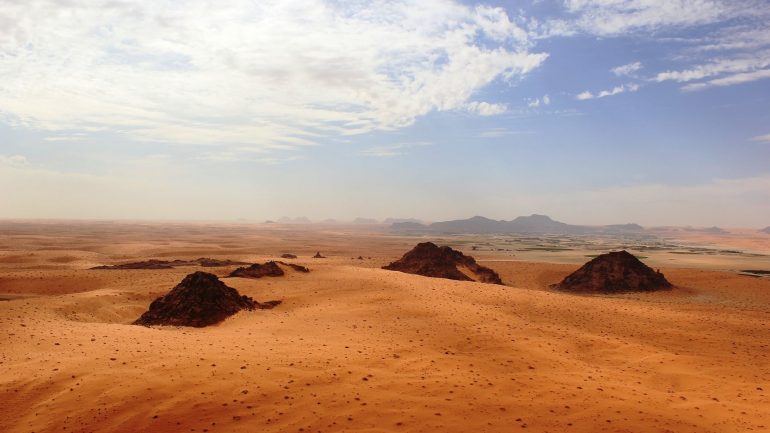However, in most cases, these are temporarily isolated sites. In contrast to the Levant, east of the Mediterranean, where many cultural layers are often superimposed in caves and from which human evolutionary and migration history can be derived, such data are so far missing for the Arabian Peninsula. But in a depression in the Nefud Desert, the Jena researchers saw a particularly good finding: in the paleo lakes of Khal Amaishan 4, abbreviated to KAM 4. “At this point we found a lot of stone tools in different layers that show: there were lakes in five different eras, each of which was inhabited by people,” explains Petraglia. The researchers used the luminescence method in the past. Dated sediments of freshwater lakes can be used to measure the time since a sediment was last exposed to sunlight.
At the KAM4 site, for the first time on the Arabian Peninsula, the sequence of water bodies can be traced with a combination of instruments from different techniques. The Jena researchers also uncovered a similar site 150 kilometers east of KAM 4. In the Jubba oasis there was a striking similarity between sediments from Paleo lakes and phases of savanna landscapes and human and animal presence. At the top of KAM 4, now the history of a place in Arabia can be reconstructed.
The first human forms were on the lakes man standing or Neanderthal ancestors
About 400,000 years ago, the desert was green, and the people of that time used hand axes, which they made with techniques typical of the Acheulian culture. Knut Bretzke, describing the work of Stone Age artisans, says, “You splinter with a flint until you get a hand axe.” Bipeds used this technique to make their hand axes 1.76 million years ago. So physically modern humans are hardly a substitute for this culture. Even 400,000 years ago there must have been representatives of the human line on the Arabian Peninsula man standing who used these tools. Or the ancestors of Neanderthals, who may have reached the Arabian Peninsula via the Levant or the Caucasus. However, the search does not suggest the latter. “The hand ax is similar to the tools used in Africa at the time,” says Michael Petraglia, drawing attention to the continent south of the Sahara. Despite this, the 400,000-year-old ax represents the oldest evidence of human forms ever found in Arabia.
Lakes reappeared in the region about 300,000 years ago. Petraglia’s team was also able to assign the hand ax to the Acheulian culture during this green phase. maybe it was again man standing Or the ancestors of Neanderthals lived on the lake of KAM 4. And again the equipment is the same as in Africa. In the next phase, about 200,000 years ago, many stone tools, on the other hand, looked completely different – they were apparently made using the Levallois technique.
“Craftsmen work the rough stone very painstakingly and meticulously until they hit a thin blade with sharp edges with a single targeted strike,” explains Bretzke. This technique is typical for anatomically modern people, homo sapiens. Only Neanderthals, who occasionally appeared in the Levant, were as good at technique. According to Bretzke, one has to assume that Stone Age craftsmen were able to adopt techniques from other groups of people they met without any problems. Or he skillfully copied a found blade using “Learning by Doing”.

Web guru. Amateur thinker. Unapologetic problem solver. Zombie expert. Hipster-friendly travel geek. Social mediaholic.





